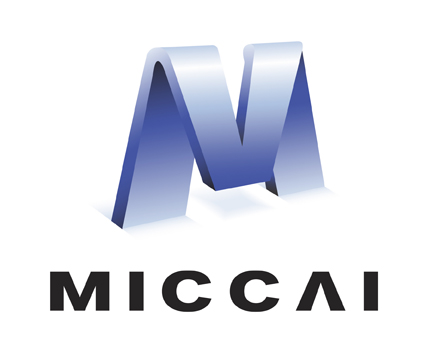Abstract
In many clinical settings, a lot of medical image datasets suffer from the imbalance problem, which makes the predictions of the trained models to be biased toward majority classes. Semi-supervised Learning (SSL) algorithms trained with such imbalanced datasets become more problematic since pseudo-labels of unlabeled data are generated from the model’s biased predictions. Towards addressing this challenge, we propose a SSL framework which can effectively leverage unlabeled data for improving the performance of deep convolutional neural networks. It is a consistency-based method which exploits the unlabeled data by encouraging the prediction consistency of given input under adversarial perturbation and diversity maximization. We additionally propose to use uncertainty estimation to filter out low-quality consistency targets for the unlabeled data. We conduct comprehensive experiments to evaluate the performance of our method on two publicly available datasets, i.e., the ISIC 2018 challenge dataset for skin lesion classification and the ChestX-ray14 dataset for thorax disease classification. The experimental results demonstrated the efficacy of the present method.
Access this chapter
Tax calculation will be finalised at checkout
Purchases are for personal use only
Similar content being viewed by others
References
Esteva, A., et al.: Dermatologist-level classification of skin cancer with deep neural networks. Nature 542(7639), 115–118 (2017)
Rajpurkar, P., et al.: Deep learning for chest radiograph diagnosis: a retrospective comparison of the CheXNeXt algorithm to practicing radiologists. PLoS Med. 15(11), e1002686 (2018)
Skrede, O.J., et al.: Deep learning for prediction of colorectal cancer outcome: a discovery and validation study. The Lancet 395(10221), 350–360 (2020)
Wang, X., Peng, Y., Lu, L., Lu, Z., Bagheri, M., Summers, R.M.: ChestX-ray8: hospital-scale chest x-ray database and benchmarks on weakly-supervised classification and localization of common thorax diseases. In: Proceedings of the IEEE Conference on Computer Vision and Pattern Recognition, pp. 2097–2106 (2017)
Cheplygina, V., de Bruijne, M., Pluim, J.P.: Not-so-supervised: a survey of semi-supervised, multi-instance, and transfer learning in medical image analysis. Med. Image Anal. 54, 280–296 (2019)
Laine, S., Aila, T.: Temporal ensembling for semi-supervised learning. arXiv preprint arXiv:1610.02242 (2016)
Tarvainen, A., Valpola, H.: Mean teachers are better role models: weight-averaged consistency targets improve semi-supervised deep learning results. In: Advances in Neural Information Processing Systems, pp. 1195–1204 (2017)
Miyato, T., Maeda, S.I., Koyama, M., Ishii, S.: Virtual adversarial training: a regularization method for supervised and semi-supervised learning. IEEE Trans. Pattern Anal. Mach. Intell. 41(8), 1979–1993 (2018)
Xie, Q., Luong, M.T., Hovy, E., Le, Q.V.: Self-training with noisy student improves ImageNet classification. In: Proceedings of the IEEE/CVF Conference on Computer Vision and Pattern Recognition, pp. 10687–10698 (2020)
Szegedy, C., et al.: Intriguing properties of neural networks. arXiv preprint arXiv:1312.6199 (2014)
Goodfellow, I.J., Shlens, J., Szegedy, C.: Explaining and harnessing adversarial examples. arXiv preprint arXiv:1412.6572 (2014)
Nakkiran, P.: Adversarial robustness may be at odds with simplicity. arXiv preprint arXiv:1901.00532 (2019)
Tsipras, D., Santurkar, S., Engstrom, L., Turner, A., Madry, A.: Robustness may be at odds with accuracy. arXiv preprint arXiv:1805.12152 (2018)
Dong, Q., Gong, S., Zhu, X.: Imbalanced deep learning by minority class incremental rectification. IEEE Trans. Pattern Anal. Mach. Intell. 41(6), 1367–1381 (2018)
Kim, J., Hur, Y., Park, S., Yang, E., Hwang, S.J., Shin, J.: Distribution aligning refinery of pseudo-label for imbalanced semi-supervised learning. In: Advances in Neural Information Processing Systems, vol. 33 (2020)
Berthelot, D., et al.: ReMixMatch: semi-supervised learning with distribution alignment and augmentation anchoring. arXiv preprint arXiv:1911.09785 (2019)
Arazo, E., Ortego, D., Albert, P., O’Connor, N.E., McGuinness, K.: Pseudo-labeling and confirmation bias in deep semi-supervised learning. In: 2020 International Joint Conference on Neural Networks (IJCNN), pp. 1–8. IEEE (2020)
Chen, M., Xue, H., Cai, D.: Domain adaptation for semantic segmentation with maximum squares loss. In: Proceedings of the IEEE/CVF International Conference on Computer Vision, pp. 2090–2099 (2019)
Nie, F., Huang, H., Cai, X., Ding, C.: Efficient and robust feature selection via joint 2, 1-norms minimization. In: Advances in Neural Information Processing Systems, vol. 23 (2010)
Kingma, D.P., Ba, J.: Adam: a method for stochastic optimization. arXiv preprint arXiv:1412.6980 (2014)
Codella, N., et al.: Skin lesion analysis toward melanoma detection 2018: a challenge hosted by the international skin imaging collaboration (ISIC). arXiv preprint arXiv:1902.03368 (2019)
Liu, Q., Yu, L., Luo, L., Dou, Q., Heng, P.A.: Semi-supervised medical image classification with relation-driven self-ensembling model. IEEE Trans. Med. imaging 39(11), 3429–3440 (2020)
Russakovsky, O., Deng, J., Su, H., Krause, J., Satheesh, S., Ma, S., Huang, Z., Karpathy, A., Khosla, A., Bernstein, M., et al.: ImageNet large scale visual recognition challenge. Int. J. Comput. Vis. 115, 211–252 (2015)
Huang, G., Liu, Z., Van Der Maaten, L., Weinberger, K.Q.: Densely connected convolutional networks. In: Proceedings of the IEEE Conference on Computer Vision and Pattern Recognition, pp. 4700–4708 (2017)
Aviles-Rivero, A.I., et al.: Graph-net-chest x-ray classification under extreme minimal supervision. arXiv preprint arXiv:1907.10085 (2019)
Acknowledgments
This study was partially supported by the Natural Science Foundation of China via project U20A20199, and by Shanghai Municipal Science and Technology Commission via Project 20511105205 and 20DZ2220400.
Author information
Authors and Affiliations
Corresponding author
Editor information
Editors and Affiliations
1 Electronic supplementary material
Below is the link to the electronic supplementary material.
Rights and permissions
Copyright information
© 2021 Springer Nature Switzerland AG
About this paper
Cite this paper
Liu, P., Zheng, G. (2021). Semi-supervised Learning Regularized by Adversarial Perturbation and Diversity Maximization. In: Lian, C., Cao, X., Rekik, I., Xu, X., Yan, P. (eds) Machine Learning in Medical Imaging. MLMI 2021. Lecture Notes in Computer Science(), vol 12966. Springer, Cham. https://doi.org/10.1007/978-3-030-87589-3_21
Download citation
DOI: https://doi.org/10.1007/978-3-030-87589-3_21
Published:
Publisher Name: Springer, Cham
Print ISBN: 978-3-030-87588-6
Online ISBN: 978-3-030-87589-3
eBook Packages: Computer ScienceComputer Science (R0)


